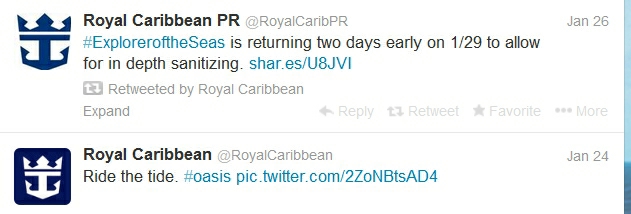SeaWorld PR in Full Swing (Spin)
/ At least one reporter thinks the SeaWorld PR machine should take a rest. SeaWorld took a big reputation hit when more than 21 million people watched Blackfish, a documentary claiming that orca whales suffer in captivity, in some cases causing injury and death to trainers who work at the park.
At least one reporter thinks the SeaWorld PR machine should take a rest. SeaWorld took a big reputation hit when more than 21 million people watched Blackfish, a documentary claiming that orca whales suffer in captivity, in some cases causing injury and death to trainers who work at the park.
Now, five months after the movie aired, SeaWorld submitted a complaint to the Labor Department, questioning the ethics of an investigator cited in the film. Calling the move "bizarre PR," Yahoo writer Jeff Macke said, "The complaint put SeaWorld and the documentary on the front page of the N.Y. Times business section; exactly where the company doesn't want it to be."
SeaWorld's strategy seems to be a continuation of its approach from last July, which a New York Times writer described:
"SeaWorld, advised by the communications firm 42West, which is better known for promoting films than punching back at them, is taking the opposite approach. By midweek, the company was providing top executives and animal caretakers for interviews about the movie and its purported flaws.
"It was also deliberating possible further moves, which might conceivably include informational advertising, a Web-based countercampaign or perhaps a request for some sort of access to CNN, which picked up television rights to 'Blackfish' through its CNN Films unit and plans to broadcast the movie on Oct. 24."
On its website, SeaWorld writes the "Truth About Blackfish," which the company calls "propaganda, not a documentary":
"We object to Blackfish because its two central premises are wrong: (1) that life at SeaWorld is harmful for killer whales and for trainers working with these animals, and (2) that SeaWorld has attempted to cover up the facts surrounding the tragic death of trainer Dawn Brancheau in 2010, as well the history of Tilikum, the killer whale involved in that accident. Nothing could be further from the truth.
"To make these ultimately false and misleading points, the film conveys falsehoods, manipulates viewers emotionally, and relies on questionable filmmaking techniques to create 'facts' that support its point of view." (continue reading)
The post then describes several areas the company considers false or misleading.
Discussion Starters:
- What's your view? Do you agree with the Yahoo writer's assessment of SeaWorld's PR approach?
- Assess SeaWorld's criticism of the movie. Which are the strongest points, and which are the weakest? How, if at all, does this article affect your perception of Blackfish?






















